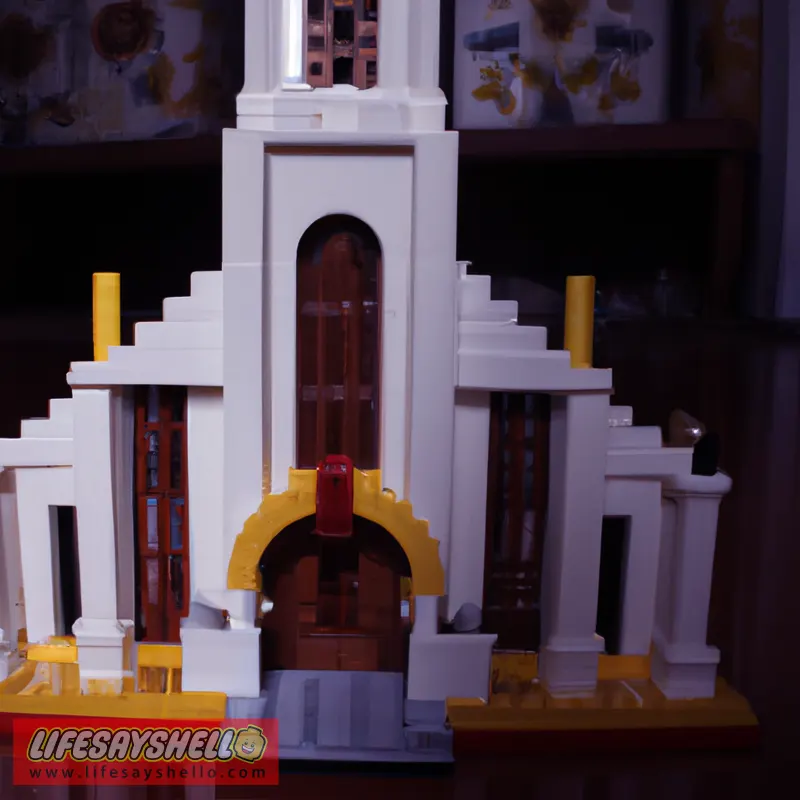Unpacking the Origins: Who Established the Catholic Church?

Have you ever wondered how the Catholic Church was first established? The Catholic Church itself claims origins dating back to Jesus Christ and his original apostles. However, some argue that the Church’s real roots lie in the problematic mixture of Christianity and pagan religions. In this in-depth article, we’ll examine the debate around the founding of the Catholic Church and the evidence both sides present.
The Catholic Church credits its establishment to Jesus Christ himself, who appointed the twelve Apostles and commanded them to carry on his work after his death and resurrection. This claim is bolstered by accounts in the New Testament, which record Jesus’ activities and identify the Apostles he selected. The Church also points to the Holy Spirit coming upon the Apostles at Pentecost as the empowering start of their public ministry and work spreading the gospel message.
From these origins, the Catholic Church considers today’s bishops as successors to the original Apostles. The Pope is viewed as the singular successor to Saint Peter, who was appointed by Jesus to lead the Church and ministered in Rome after Jesus’ death. This direct line of papal succession lending legitimacy and authority continues to be an important component of Catholic self-understanding.
However, not all scholars and historians accept the Catholic Church’s stance on its origins. Some argue that the real roots of Catholicism lie not in the teachings of Jesus and the Apostles, but rather in the gradual compromise of Christianity with the different pagan religions that surrounded its earliest communities.
The Competing Theory: Origins in Pagan Syncretism
According to this view, as Christianity spread rapidly in the first few centuries AD, missionaries and early Church leaders made problematic concessions to pagan religions and cultures in order to advance conversion efforts. Rather than sticking to the pure gospel message, it is argued that the early Church opted to “paganize” Christianity and “Christianize” paganism to accelerate growth.
Critics charge that instead of maintaining clear distinctions between orthodox Christianity and prevailing pagan religions, the early Catholic Church blurred differences and permitted pagan philosophies, rituals, beliefs and even deities to be incorporated into Christian practice. This syncretism and mixture of Christian and pagan elements allowed the faith to spread faster initially, but also planted seeds of corruption, compromise, and confusion down the road.
According to this theory, evidence of pagan roots that still remain in Catholicism today include:
The dominance of various Virgin Mary cults and goddess worship that were assimilated from popular pagan female deities of the ancient world. Critics argue that veneration of Mary has little Biblical basis.
The preservation of elaborate rituals, clergy hierarchies, pilgrimages and rich visual imagery in Catholic liturgy that closely mimic elements of pagan temple ceremonies and folk religions.
The deification of saints as minor god-like figures, which has echoes of polytheistic religions filled with many personal gods and demigods.
The assigning of mythological and symbolic meaning to physical objects, relics, places or sacraments, which some assert parallels common practices in pagan folk magic and nature religions.
The setting aside of certain days, seasons and dates as being more sacred than others, arguably adapted from pagan seasonal holidays and nature calendars.
The belief in purification and suffering in purgatory as necessary after death, which bears similarities to the purgation of souls in the underworld described in some pagan philosophies.
According to those who subscribe to the syncretic origins theory, these points and more indicate that the Catholic Church is not exclusively based on the teachings of Jesus Christ and the Apostles. Instead, it represents a pragmatic mixture of Christian and pagan ideas forged by a Church that cared more about quickly converting populations than sticking to doctrine.
Examining the Evidence from Both Perspectives
This debate around the origins of the Catholic Church rests not just on theological claims, but also on historical evidence that scholars continue to examine. Those advocating for the Church’s apostolic origins point to documents from the New Testament as well as early Christian writings outside the Biblical canon that describe the activities of Jesus and the Apostles. The text and details in these ancient sources seem to generally align with and support the Catholic Church’s institutional claims on succession and authority.
Advocates also highlight examples of early Church leaders, such as Paul, openly condemning and rejecting any attempt to twist the gospel message or incorporate pagan rituals and beliefs. They argue the apostolic concern with doctrinal purity provides evidence that a compromise with rampant paganism did not occur. Records showing the martyrdom of Christians who refused to blend Christianity with state-sponsored paganism are also cited as proof that early Church members were willing to die rather than concede core principles.
Defenders frequently point out that any emerging social or religious movement will inevitably absorb some customs and language from the cultural environments in which it exists. But they argue this inevitable contextualization does not mean the Catholic Church formally embraced pagan philosophies and rituals in its early doctrines, institutions, and practices.
Scholars who promote the syncretism perspective counter these claims in several ways. They argue that Biblical and Church texts highlighting Christian resistance to pagan compromise were likely exaggerated after the fact. Early Church leaders would have been incentivized to downplay accommodation to make their message and history appear pure. Critics also analyze records and archeological evidence of syncretism before and during the crucial first few centuries of Christianity’s establishment to argue that some blending of religious ideas was clearly taking place.
They often assert that the Catholic Church’s willingness to create folk hero saints drawing on pre-Christian mythologies, its absorption of pagan philosophies in medieval Scholastic theology, and its continued use of pagan symbolic rituals provide evidence of an ongoing, pragmatic syncretism, rather than a distinct rejection of non-Christian influences.
In evaluating the merits of both theories, there are good faith arguments on each side worth considering. There is also plenty of room for intellectually honest disagreement. Establishing the precise origins of any major religion is an inherently complex exercise given the limits of incomplete historical records, biases among sources from different eras, and gaps in archaeological evidence.
Drawing Your Own Conclusions from the Evidence
In the end, determining whether the Catholic Church was formally established by Jesus, the Apostles, and the Holy Spirit, or whether its roots lie more in a problematic mingling with pagan religions, involves weighing textual sources, philosophical arguments, and incomplete records to construct the most compelling historical narrative.
Much also depends on how strictly one defines “origins”. Even if evidence pointed to some syncretism in the 2nd and 3rd centuries AD as Christianity rapidly spread among pagan populations, does this definitively prove that apostolic authority or unbroken succession to Christ Himself was completely fabricated? Or was this simply an inevitable process of contextualization and inculturation in a missionary religion’s earliest days?
There are intelligent perspectives on each side of this debate among scholars and theologians. As with any look into ancient history, gaps in our knowledge remain, providing space for different interpretations of the available evidence. The truth likely involves nuanced middle grounds between polarized opinions. As an open-minded reader, you must ultimately weigh each viewpoint and decide where you feel the preponderance of evidence lies.
I hope this deep dive provides helpful background and food for thought around this important, but often overlooked debate on the very origins of the Catholic Church. Let me know in the comments your perspective—does the evidence point more convincingly to apostolic succession or pagan syncretism…or perhaps some complex combination of both? What other evidence and viewpoints would be useful to consider in evaluating this historical issue that remains passionately contested today?



Comments